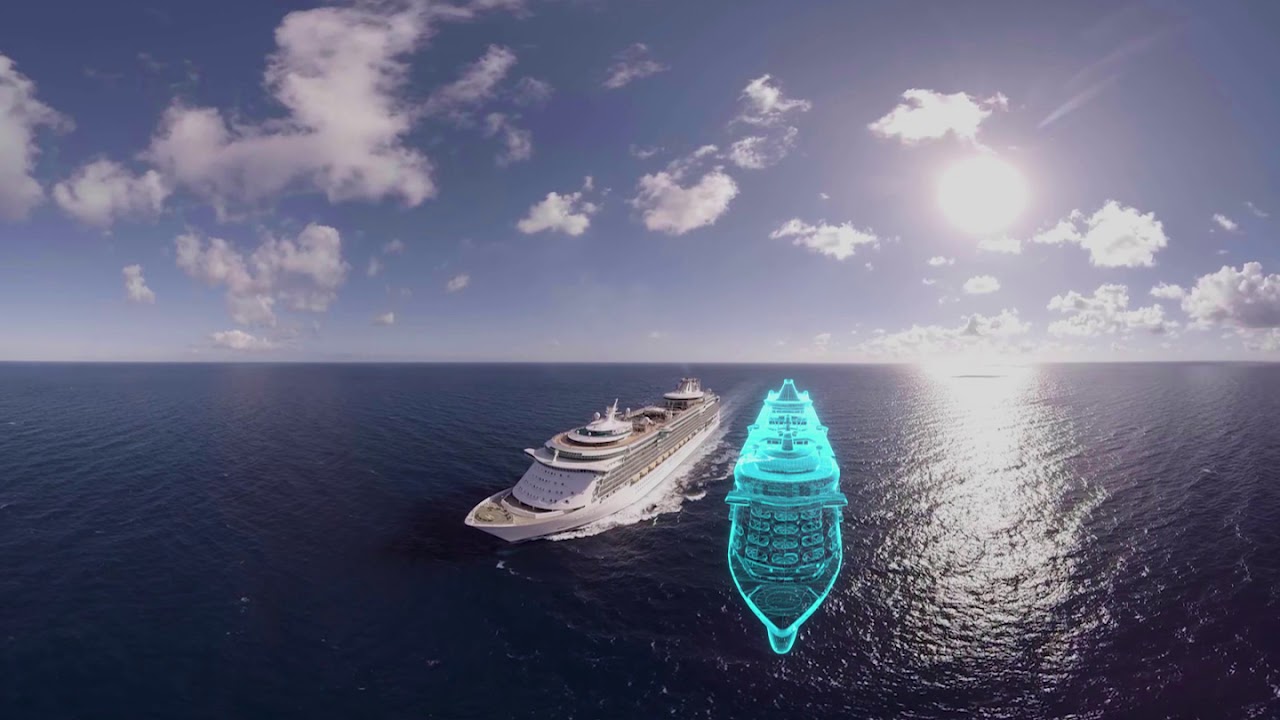A digital twin is a dynamic, up-to-date replica of a physical asset that combines design, construction, and operational data. If real-time operations data is incorporated, digital twins have the behavioural awareness to simulate, predict and inform decisions based on real-world conditions.
WHO BROUGHT DIGITAL TWINS TO THE LIMELIGHT?
The concept of a digital twin came to the public’s attention in 2002 after a presentation by Michael Grieves. The presentation involved the development of a product lifecycle management centre. But digital twin technology itself has been utilised since the 1960s. NASA would create duplicated systems at ground level to match the system the crew would use in space. They developed a digital twin to assess and simulate conditions on board Apollo 13. They didn’t realise then that this digital twin would aid in the safe return of Apollo 13. NASA could test procedures and systems on the ground before giving instructions to the crew.
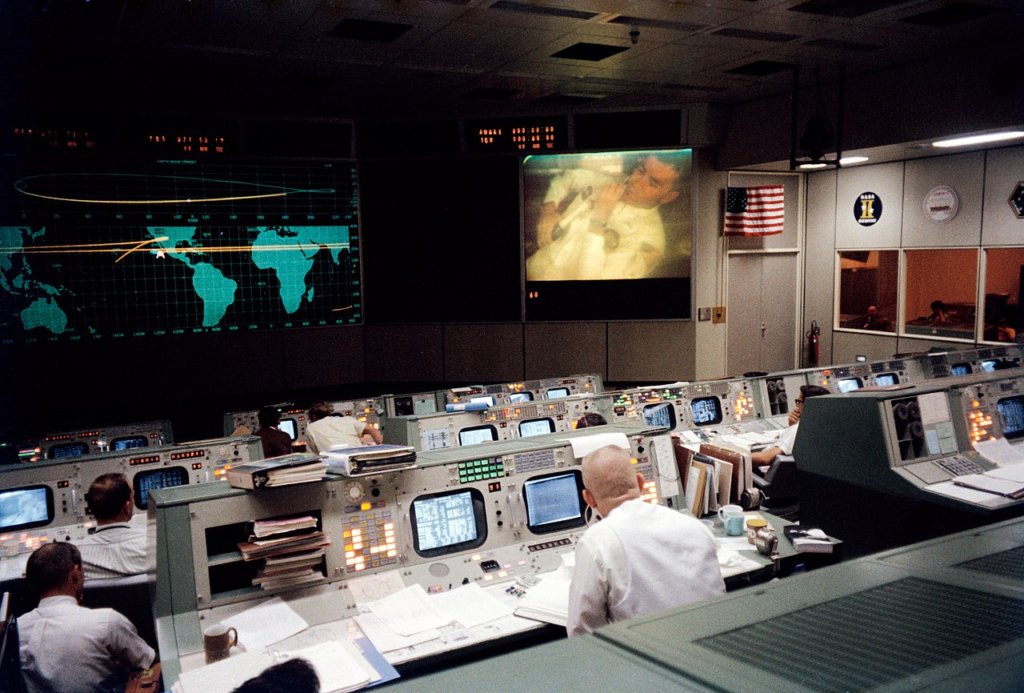
Apollo 13 Control Room
Since then, people have been using digital twins in countless industries, including construction. And there are no limits for digital twins, from small interior spaces to high-profile architecture and large-scale masterplan schemes; digital twins can aid in planning, design, construction and onward through the entire life cycle of a building or asset.
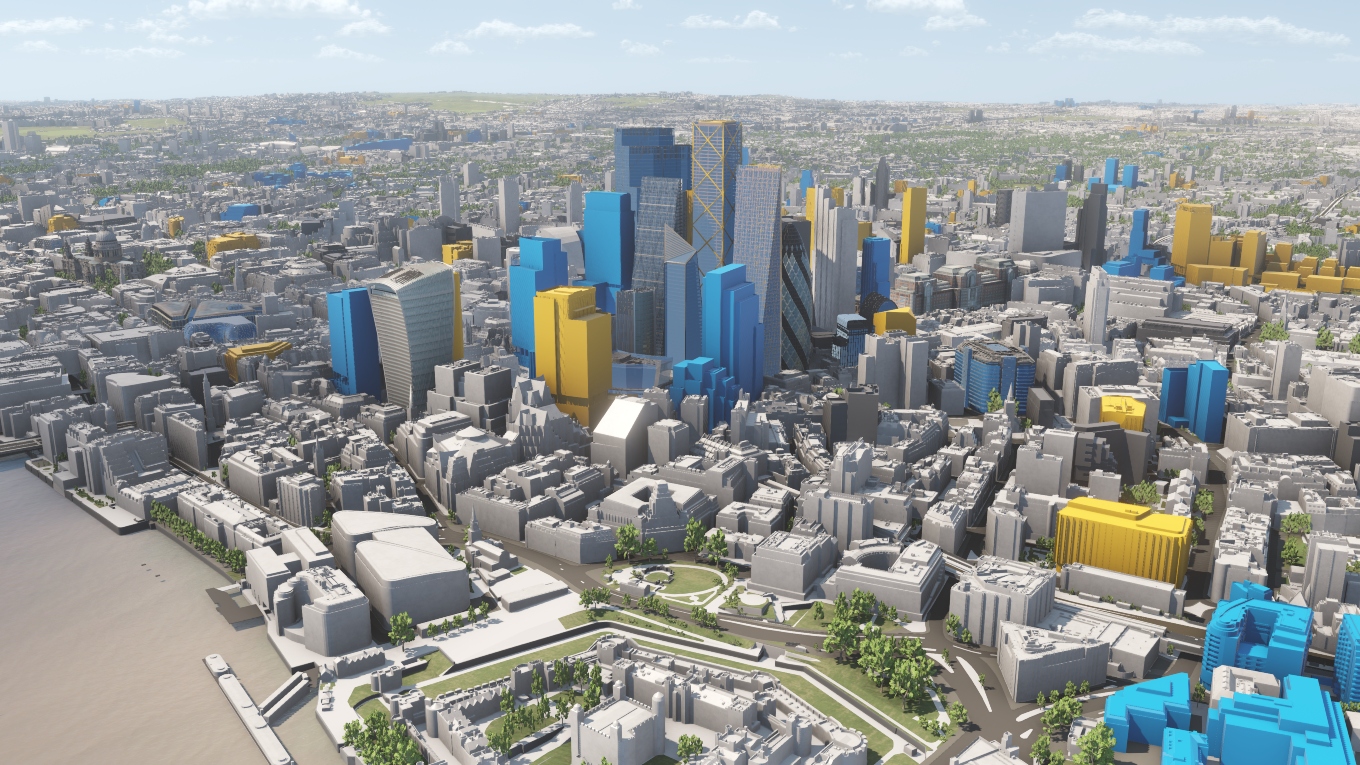
Digital Twin of London
INFORMATION LEVELS OF DIGITAL TWINS
A digital twin can be defined based on the digital information it contains:
Descriptive Twin
A descriptive twin is a live, editable version of design and construction data – a visual replica of a built asset. Users specify the information they want to include and the data they want to extract.
Informative Twin
The informative twin has an added layer of operational and sensory data. The twin captures and aggregates defined data and verifies it to ensure systems work together.
Predictive Twin
This twin can use operational data to gain insights. For instance, it can track the use of a particular space or equipment and then predictive maintenance becomes the norm instead of reactive.
Comprehensive Twin
This twin simulates future scenarios and considers “what-if” questions.
Autonomous Twin
This twin can learn and act on behalf of users.
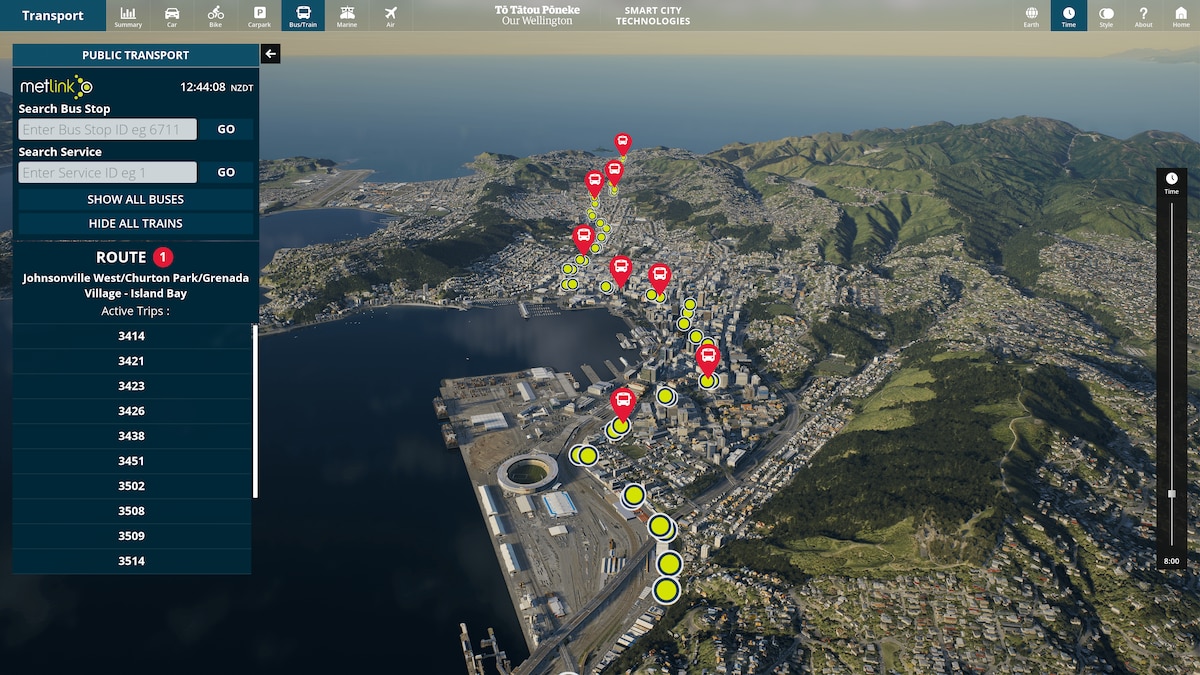
Digital Twin of Wellington in New Zealand
DIGITAL TWINS & OFFICE FIT-OUT
BIM Models
When it comes to office fit-out, a digital twin can be created and utilised in many ways. Creating a descriptive twin aids the planning, design, and construction phase. A BIM model can be fit-out in 3D if it’s a brand-new office building. If it’s a refurbishment, a point cloud scan can help to create a twin of the existing building. It is possible to add new elements using phasing tools within BIM-enabled software.
This BIM model can then be hosted in the cloud, meaning that users of the space have access to a digital twin of the building. If someone spills something on a carpet or furniture and requires repair, it is straightforward to go into the model, select the corresponding item and see the exact carpet or fabric that needs replacing. It can hold the warranty information for furniture, fittings and appliances within this model. If the model is maintained and updated, you will always have an up-to-date digital representation of everything within the space. It is far more efficient and cost-effective than the traditional O&M manual, which can contain thousands of pages of information.
Operational Data
Much more is achievable by fully utilising the digital twin. Modelled M&E information means sensors throughout the building can link back to the digital twin. Therefore, Facility Managers can see live data on how equipment is used and predict maintenance. It can also monitor the utilisation of spaces within the building and control lighting, heating, and cooling depending on whether rooms are in use. It’s beneficial to creating a sustainable workplace and saving time, energy, and money throughout the lifecycle of the building.
By using a desk booking system, you can see how many desks are in use throughout the week, month, or year. You can see where people like to sit, see which spaces are under or unused, and think of ways to rearrange the floorplate to maximise the usable space, creating a much more dynamic and flexible working environment.
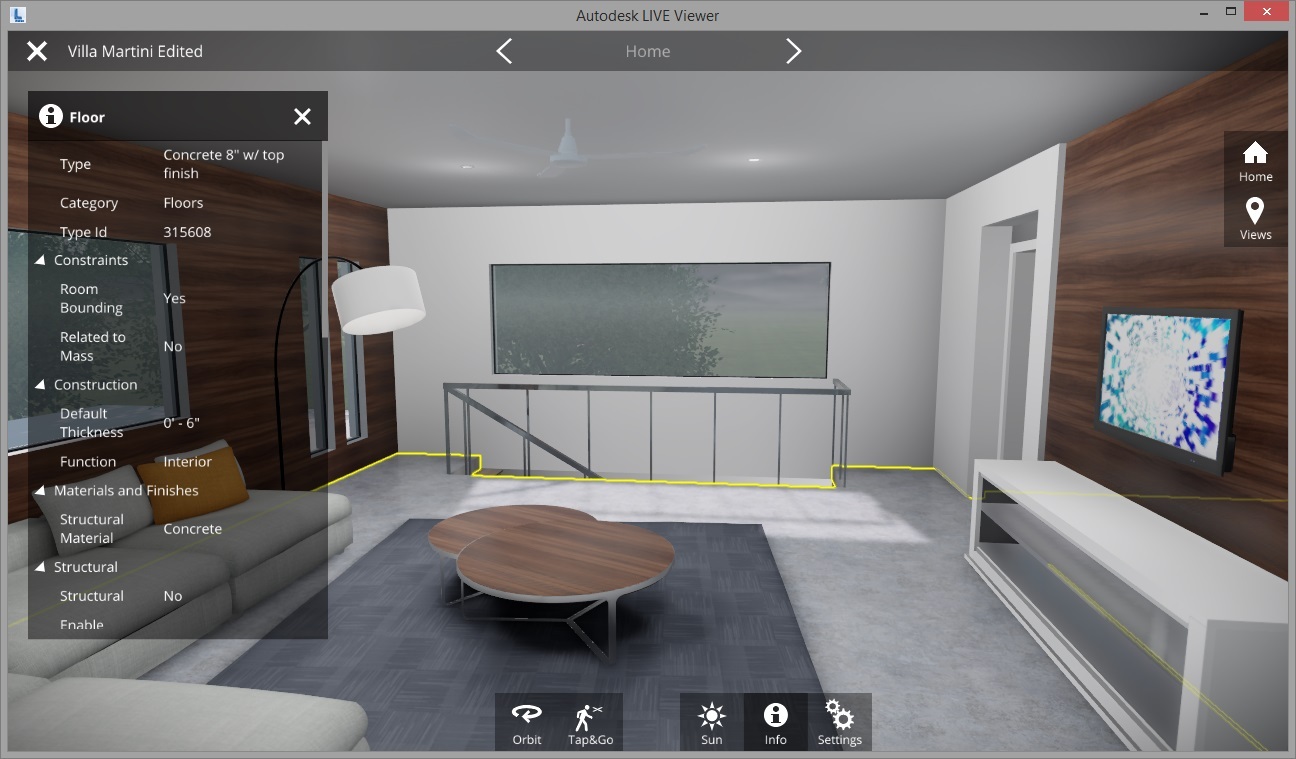
Autodesk Viewer
HOW ELSE ARE DIGITAL TWINS BEING USED?
The possibilities are endless, and outside of the AEC Industry, some genuinely remarkable digital twins exist.
Neurotwin Project
The EU-funded Neurotwin project aims to create a digital twin of the human brain – one of the universe’s most complex and fascinating structures or organisms. This project aims to simulate specific human brains to build models that can predict the best treatments for conditions such as Alzheimer’s and epilepsy. Neurotwin is the first project attempting to model electromagnetic activity and physiology; clinical trials using the model are due to start next year!
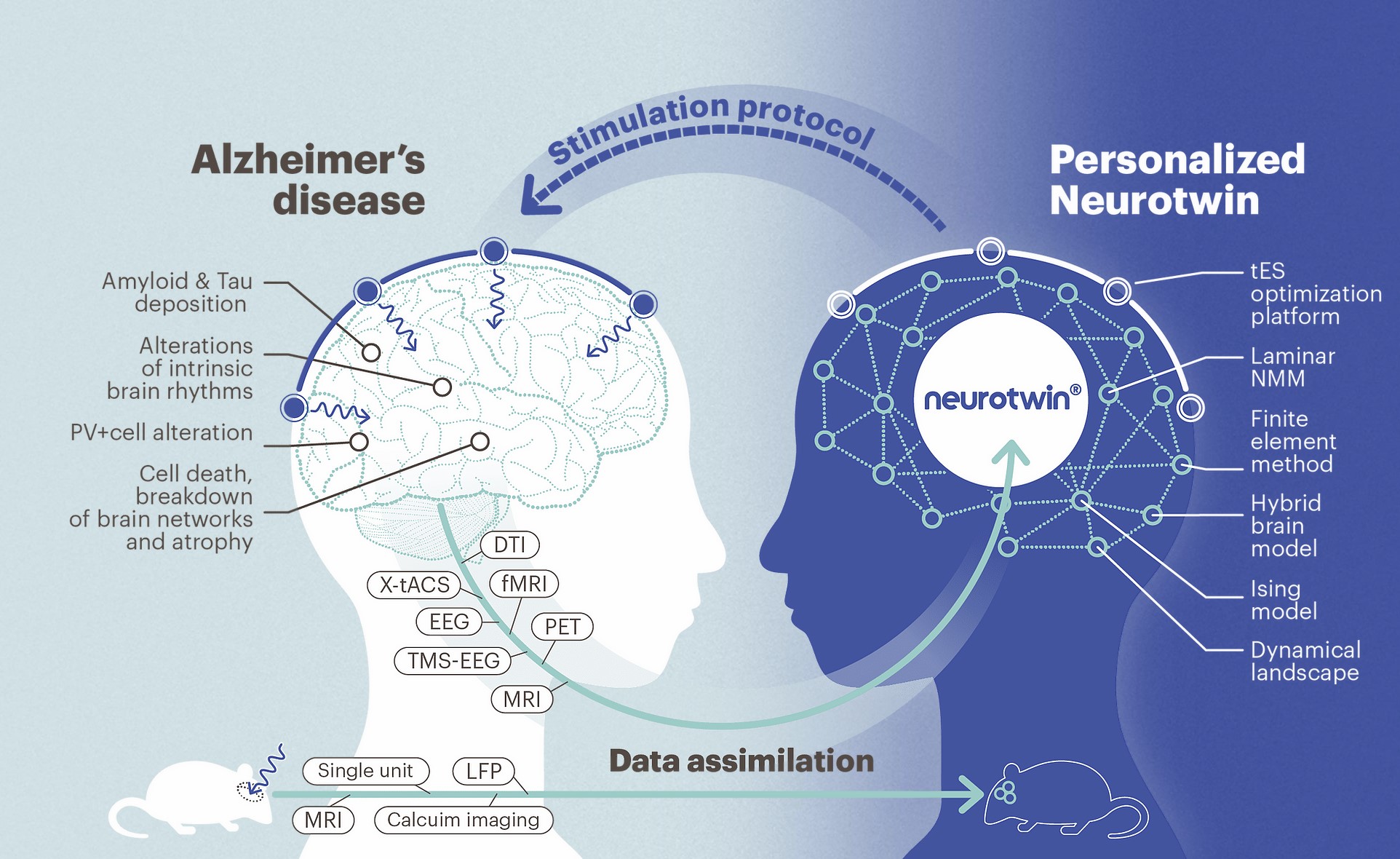
Neurotwin Project
Shanghai City
The Shanghai Urban Operations and Management Centre has built a digital twin of the city of 26 million inhabitants, which models 100,000 elements from refuse disposal and collection facilities to e-bike charging infrastructure, road traffic, and the size and location of apartment buildings. The model uses data from satellites and drones to construct the living model. It simulates the effects of natural disasters such as flooding to aid response planning.

Digital Twin of Shanghai
Tesla Simulation
Tesla creates a digital simulation of every one of its cars, using data collected from sensors on the vehicle and uploaded to the cloud. Consequently, it allows them to determine where faults and breakdowns are most likely to occur and minimises the need for customers to bring their cars in for unexpected repairs.

Car Modelling Digital Twin
Wellington City, New Zealand
Wellington City in NZ created a digital twin to showcase real-time activity and create a platform to enhance decision-making. Therefore providing transportation statistics for buses, rail, ferries, bikes and cars. They can create air traffic visualisations and even see car parking availability.
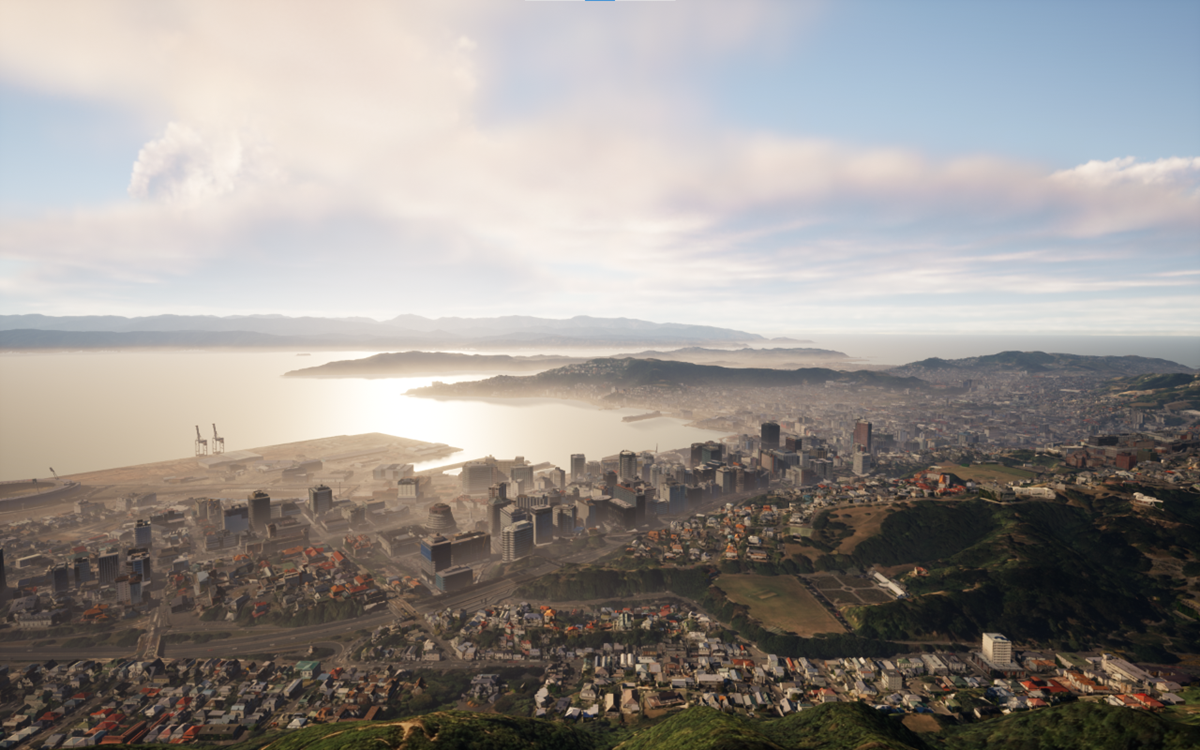
Wellington, New Zealand in Unreal Engine
At Mobius, the concept of digital twins excites us. Consequently, we have been creating digital twins of existing buildings for several years. Our dream is to develop comprehensive twins of entire business parks. Please get in touch if you’d like to learn more or see what we’ve been doing within the fit-out sector.

